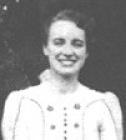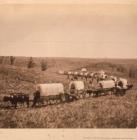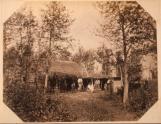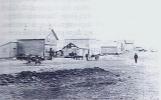1
Opening The WestHistory has taught us that you cannot own the land, but it seldom mentions that the land owns all of us. Our very existence depends upon it and no one knows this better than the pioneers.
Our story is about a small prairie village, "Cartwright", and the people in the district who turned a small part of the windswept prairies into a vibrant agricultural community despite the odds. What it took was the Pioneer to break the land and plant the crops. But that was just the beginning.
With a new life came new opportunities for those willing to face the hardships ahead.
Businesses grew to meet the growing demands of the new farms, and towns grew up around the businesses as more and more families made their way West. They brought their religions and built their churches. Country schools were built throughout the district and when time permitted they played their sports and sang their songs.
But the most important thing the pioneers brought with them was their vision.
3
Pioneer VisionWith a vision reaching beyond his lifetime,
Even beyond the life span of his
Children, the pioneer builded and toiled ?
Breaking the tangled grassland
Undisturbed for ages of time ?
Guiding the plow for weary miles,
Up and down, up and down
The long, endless, black furrow
Sometimes, rich was his reward:
A sweep of golden grain with heads
Nodding heavy in the autumn sun.
But often, bitter was his reward:
Cruel frost,
Sudden hail,
Blinding dust
Relentless flood ?
Yet, with courage unbroken by
Such devastation, he saw ahead ?
Far beyond his own day,
And he planted again and again.
With faith and firm conviction
He saw a land, a goodly land
Where his children's children could safely dwell,
He saw highways where deep-rutted
Trails scarred the prairie's face;
Tall stately homes nestling
In shelter belts now encircling
Long huts ?
Could it be
That sometimes near the end
Of an unbelievably toilsome day,
With aching back and calloused hand,
He would pause for a moment
Of relaxation, and look to the north,
To the east, to the south and to the west ?
And he would see, with rare flash
Of prophetic foresight, this land
Even as we see it today ?
The fairest place on earth to dwell?
Once again to the plow ?
For vision
Was his incentive and his reward!
- Dorthy Clark
5
By 1873, the government recognized the need to start opening up the Canadian West for settlement so Her Majesty's British North America Boundary Commission surveyors were sent to survey and map the official boundary between Canada and the United States. Their efforts helped make it possible for the newly formed North West Mounted Police to complete their historic March West in 1874 to bring new law and order to a land that had been previously governed for 10,000 years by seven of the First Nation Tribes.Driving along this route today you will find a progressive, vibrant countryside, its towns and villages exciting hubs of commerce and community activity. Scenery shifts from bountiful farm fields and rolling prairie to surprising vistas of lakes; hills, valleys and wooded parkland.
6
The Photographers On The Badger Creek1873
Two Miles North of Present Day Cartwright, Manitoba, Canada
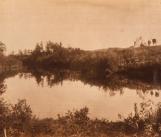
7
The Photographers on Badger CreekA history of the North West Mounted Police records the stopping of their contingent in 1874 at the crossing on the Badger Creek where Old Cartwright was situated later. One year after the picture of the Photographers on Badger Creek was taken.
